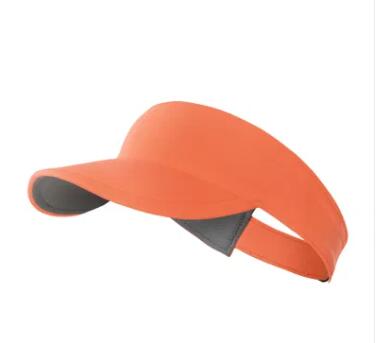Fit for the Game: The Role of Materials in Crafting Sports Caps for Different Athletic Pursuits
2023-12-02
Introduction:
In the world of sports, every detail matters, and that includes the materials used in the gear athletes wear. Sports caps, once primarily chosen for their team branding and design, now also come under scrutiny for the materials that contribute to performance, comfort, and functionality. Let's explore how specific materials are preferred for sports caps in different sports, each catering to the unique demands of the game.
1. Breathable Fabrics for High-Intensity Activities
In sports that demand intense physical exertion and generate significant body heat, breathability is key. Caps crafted from lightweight, breathable fabrics like polyester or mesh are favored in sports such as running, soccer, and basketball. These materials allow air circulation, preventing overheating and enhancing overall comfort during extended periods of activity.
2. Moisture-Wicking Materials in Endurance Sports
Endurance sports, like cycling or long-distance running, require gear that can effectively manage moisture. Caps made from moisture-wicking materials, such as synthetic blends or specialized performance fabrics, excel in pulling sweat away from the skin. This not only helps keep the athlete dry but also prevents chafing, ensuring that they can maintain focus and performance over extended durations.
3. Water-Resistant Caps for Water-Based Sports
Water-based sports, including kayaking, sailing, and surfing, present unique challenges in terms of exposure to water and weather conditions. Caps crafted from water-resistant or quick-drying materials, such as nylon or neoprene, are preferred. These materials provide protection against splashes, rain, and the elements, ensuring that athletes can stay focused on their water-based pursuits without being hindered by a wet cap.
4. UV-Protective Materials for Outdoor Sports
Athletes engaging in outdoor sports, such as golf or tennis, often face prolonged exposure to the sun. Caps with built-in UV protection are crafted from materials like UPF-rated fabrics, shielding athletes from harmful UV rays. This feature not only provides sun protection but also contributes to long-term skin health for athletes who spend significant time outdoors.
5. Durable Materials for Contact Sports
In sports with a higher risk of physical contact, such as football or rugby, durability is a primary consideration. Caps made from robust materials like heavy-duty cotton or reinforced polyester blends are chosen to withstand the rigors of the game. The goal is to ensure that the cap remains intact and functional, offering both protection and team representation throughout the rough and tumble of play.
6. Sweat-Resistant Caps for Indoor Sports
Indoor sports, such as basketball or volleyball, often take place in controlled environments. However, the intensity of the game can still lead to significant sweating. Caps with sweat-resistant properties, often utilizing moisture-wicking materials, are favored in these sports. This helps maintain comfort, prevent distractions, and support the athlete's focus during fast-paced indoor activities.
Conclusion: Tailoring Caps to the Sporting Arena
As the sports landscape evolves, so too does the approach to sports cap design. The preference for specific materials in different sports is a testament to the meticulous consideration given to the unique demands of each athletic pursuit. From breathability in high-intensity activities to durability in contact sports, the materials chosen for sports caps are a crucial element in ensuring that athletes can perform at their best while staying comfortable and protected in the sporting arena. As technology advances and sports innovation continues, we can expect even more tailored and specialized materials to redefine the future of sports cap design.



